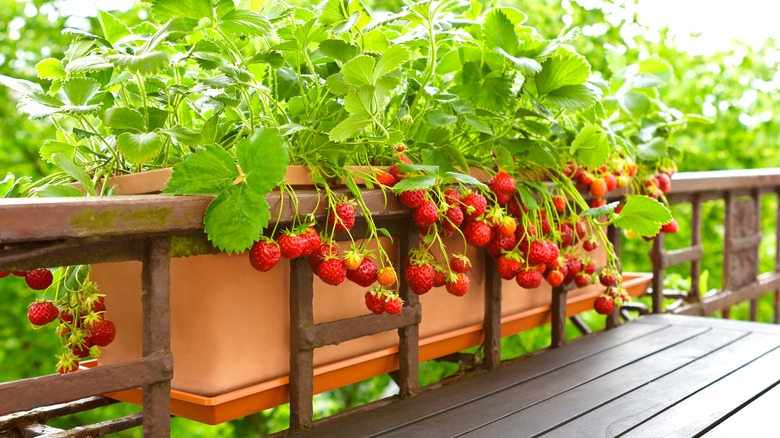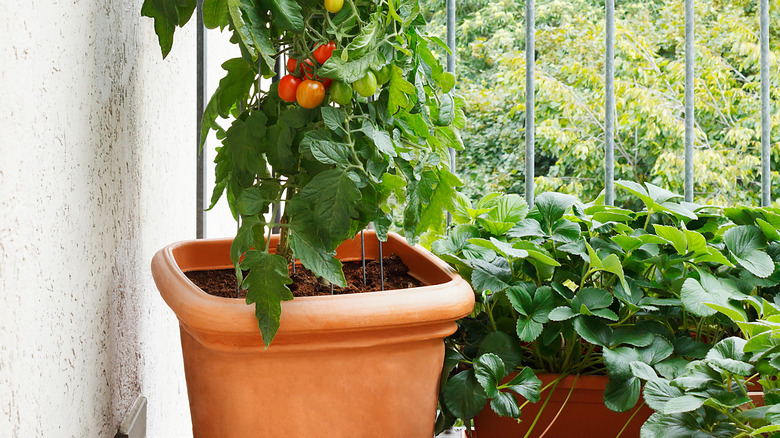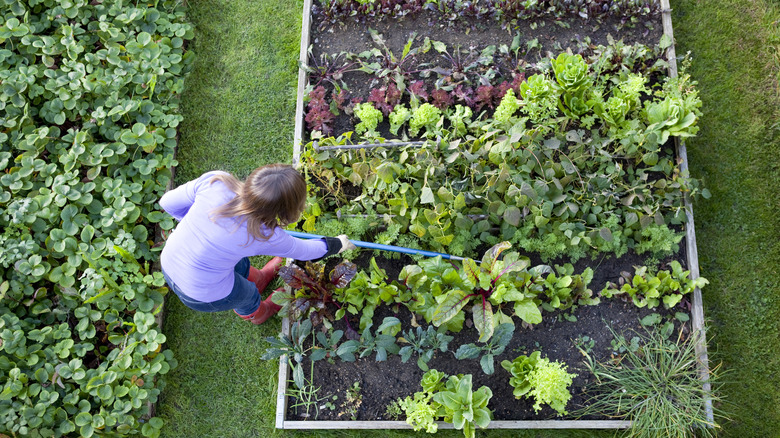Why Strawberries And Tomatoes Do Not Get Along When Planted Next To Each Other
Companion planting is a practice that can significantly benefit your garden by keeping weeds at bay while increasing pollination and the health of the soil. To enhance the growth of plants and protect them from pests and diseases, this is a valuable technique to utilize. When thoughtfully planned, it can lead to healthier plants and more abundant harvests. Some plants, however, do not get along when planted next to each other, including strawberries and tomatoes, as tomatoes can harbor diseases that weaken and kill their strawberry neighbors.
Instead, strawberries enjoy the company of plants like onions, dill, borage, and chives. These preferred companions attract natural pollinators like bees and beneficial insects such as syrphid flies and hoverflies that feed on aphids, while their strong smell works to repel berry-loving critters. Tomatoes also grow well with onions and chives, along with marigolds, basil, and lavender. Even though strawberries and tomatoes share similar preferences when it comes to companion plants, that doesn't mean that you should make them neighbors.
The pitfalls of planting tomatoes near strawberries
Let's delve a little deeper into why tomatoes and strawberries might not be the wisest choice as garden neighbors. One significant concern is the susceptibility of strawberries to a soil-borne fungal disease called verticillium wilt. The fungus causing this disease can be harbored by tomato plants, and when they are planted in close proximity to strawberries, it increases the risk of contamination. Verticillium wilt can weaken strawberry plants, leading to stunted growth and reduced fruit production.
And it's not just tomatoes that can pose a threat if planted next to strawberries; eggplants, potatoes, peppers, roses, melons, and okra can also harbor this verticillium wilt-causing fungus. Eggplant, tomato, potato and pepper plants are part of the Solanaceae family and share a vulnerability to similar soil pathogens. Anthracnose is another fungal disease that both tomatoes and strawberries are susceptible to, so when these plants are grown in close proximity, the risk of cross-contamination increases.
Ideal strawberry and tomato companion plant options
Now that we've covered why tomatoes don't make such great plant neighbors for strawberries, let's explore some additional alternatives that are known to offer excellent benefits, besides the aforementioned onions, dill, borage, and chives. Like tomatoes, strawberry companion plants include basil and marigold. Tomatoes and strawberries do well with basil as the aromatic leaves of the herb repel common pests like aphids and whiteflies, while marigolds repel harmful nematodes which can be detrimental to the growth of the plants.
Sweet alyssum and bush beans also make excellent companion plants for strawberries. Sweet alyssum is known to attract beneficial insects like green lacewings which help control aphids and other pests. Meanwhile, bush beans have the ability to regulate nitrogen in the soil. This means they convert atmospheric nitrogen into a form that plants can use, providing an additional source of nutrients for strawberries. By choosing the right companion plants for your strawberries and tomatoes, you can have a healthy and productive garden and the promise of a bountiful harvest.


